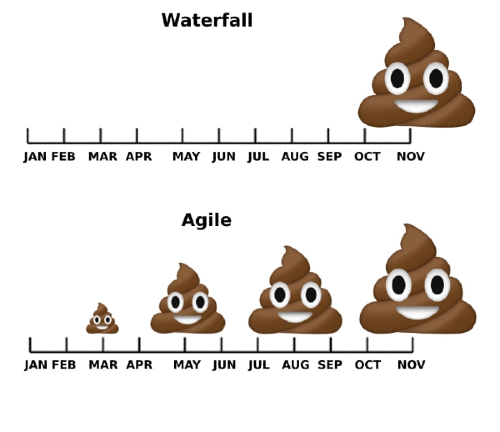This blog post is part of a series focused on behavioral practices in coding, specifically addressing Team Behaviors.
Scope Creep 👎 (And Why It’s Bad)
Scope Creep is a common problem where the boundaries of a project expand beyond the original plans after the work has started. This leads to incremental increases in workload and complexity.
The issue usually arises from one of two scenarios: either a product owner prioritizes alignment with stakeholders over the team's feedback regarding unrealistic expectations or quality concerns, or stakeholders approach developers directly, persuading them to implement "just this one thing" quickly, bypassing the normal workflow.
Key Causes of Scope Creep
- Unclear Project Objectives: Ambiguous goals can lead to misaligned expectations and additional features being added.
- Lack of Initial Requirements Analysis: Inadequate upfront analysis often results in the need to add or modify features later.
- Poor Communication: Miscommunication between stakeholders, teams, and clients can lead to misunderstandings and additional requirements.
- Stakeholder Input Changes: New or evolving stakeholder demands can expand the project scope beyond original plans.
- Gold Plating: The tendency to add extra features or enhancements that were not part of the initial plan.
- External Factors: Changes in market trends, technology, or regulatory requirements can necessitate scope changes.

Recognizing Scope Creep
- Surge in Code Commits Near Sprint's End: Ideally, the volume of code commits should decrease as the sprint progresses, reflecting the completion of features. A significant increase towards the end signals expanding project boundaries.
- Excessive Rework (Over 25%): Any point in the sprint experiencing more than a 25% increase in rework suggests shifting project goals or unanticipated complexities.
- Addition of More Tickets During a Sprint: If new tickets are continuously added while the overall sprint completion rate drops, it's a clear indicator of scope creep.
- Declining Sprint Completion Rate: A noticeable decrease in the rate of sprint completion, due to tickets evolving or expanding in scope, is a warning sign of scope creep.
How to Effectively Manage Scope Creep
Managing scope creep requires a multifaceted approach that combines organization, communication, and adaptability. Here are some strategies:
- Implement Clear and Transparent Project Tracking: Utilize project management tools to track progress and scope changes meticulously. Ensure that all team members have access to these tools, fostering transparency and making it easier to spot deviations from the original plan.
- Establish a Robust Change Management Process: Develop a formal process for handling scope changes. This should involve all relevant stakeholders in assessing the implications of proposed changes, including time, cost, resources, and overall project objectives. Ensure that this process includes clear criteria for accepting or rejecting changes.
- Set up Regular Review Sessions: Schedule frequent check-ins or scrum meetings to review progress and reassess the project scope. These sessions are crucial for early detection of scope creep and allow for timely adjustments before small changes accumulate into significant deviations.
- Emphasize Proactive Communication: Encourage open dialogue among team members, stakeholders, and clients. Proactive communication can uncover unexpressed expectations or misunderstandings about the project scope before they evolve into larger issues.
- Document and Approve Scope Changes: Any alteration to the project scope should be well-documented and require formal approval. This documentation should detail the change, its impact, and the rationale behind it, ensuring everyone involved understands the modification's implications.
- Educate Your Team about Scope Creep: Regularly educate your team on the causes and consequences of scope creep. This awareness can create a more vigilant and proactive team culture in managing the project scope.
- Balance Flexibility with Firmness: While some degree of flexibility is necessary, it's equally important to maintain firm boundaries around the project scope. Knowing when to accommodate changes and when to push back is key to managing scope creep effectively.

Examples of Scope Creep
Social Media Platform Feature Expansion: A tech company plans to introduce a simple photo-sharing feature on its social media platform. However, during development, stakeholders request additional capabilities like advanced photo editing, augmented reality filters, and direct monetization options for creators. These additions extend the development timeline and significantly inflate the budget.
AI-Powered Customer Service Chatbot: Initially, a tech firm decides to develop a basic AI-powered chatbot for customer service. As the project progresses, the marketing department suggests integrating natural language processing for more human-like interactions, and the sales team proposes e-commerce capabilities for in-chat purchases. These enhancements, while valuable, lead to scope creep, requiring more resources and extending the launch date.
Cloud Storage Integration in an Office Suite: A software company working on an office suite plans to add basic cloud storage integration. Midway through the project, the team decides to incorporate collaboration features, real-time editing, and cross-platform synchronization. This shift in scope demands additional specialists, increases the complexity of the project, and delays the release.
Smart Home Device Ecosystem: A company initially plans to release a single smart home device. However, as development progresses, there is a push to create a complete ecosystem of interconnected devices, including smart lights, thermostats, and security cameras, all controlled by a central app. This ambitious expansion greatly exceeds the original scope, requiring a larger team and more funding.
Gaming Console with Extended Features: A gaming company designs a new console focused on high-performance gaming. As the project progresses, suggestions to include VR capabilities, streaming services, and social media integration arise. These additions, while enhancing user experience, stray from the initial focus and significantly increase development time and costs.
In these examples, scope creep occurs due to the addition of new features or capabilities beyond the initial project scope, often driven by stakeholder requests or an ambition to deliver a more comprehensive product. This can lead to increased costs, extended timelines, and resource allocation challenges. Effective project management and clear communication among stakeholders are key to managing and mitigating scope creep.





